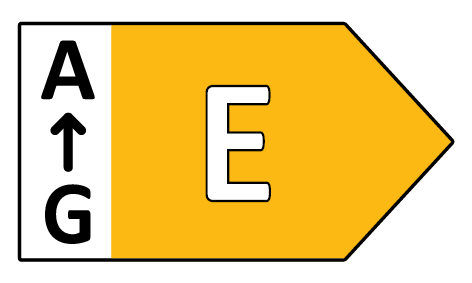
LED modules
Experience the versatile possibilities of our LED modules and discover our wide range for the perfect lighting solution in your home or office.














































LED modules are small, compact light sources that can be used in a variety of lighting applications. They consist of an LED chip, a substrate, a power supply system and a housing that protects the components and directs the light beam.
LED modules have a long life and are energy efficient, making them a cost-effective lighting solution. Another advantage of LED modules is their versatility. They can come in a variety of colors and sizes and can be mounted in a variety of locations in a variety of configurations.
Some of the most common applications for LED modules are in indoor lighting, such as kitchens, bathrooms and offices, as well as outdoor lighting, such as on buildings, streets and walkways.
LED modules an excellent lighting solution that is durable, energy efficient and versatile. It is important to carefully consider lighting requirements and available power when selecting LED modules to ensure the right solution is selected.
What are the different types of LED modules?
There are several types of LED modules that can vary in their sizes, power levels, and light colors. Some of the most common types of LED modules include:
Single LED Modules: These modules consist of a single LED chip and a housing that directs the light and protects the components.
Multiple LED modules: These modules consist of multiple LED chips arranged in a package. They offer higher performance than single LED modules and are typically suitable for larger lighting applications.
RGB LED modules: These modules are capable of projecting light in different colors. This makes them ideal for applications where colored lighting is required, such as in a bar or nightclub.
High-power LED modules: These modules have a higher power output than other LED modules and are ideal for applications where strong lighting is required, such as in a factory or warehouse.
Flexible LED modules: These modules can be made in a variety of shapes and sizes and are ideal for applications where flexible lighting is required, such as in a car or a tent.
It is important to note that each type of LED module has its own strengths and weaknesses, and choosing the right module depends on the specific lighting requirements.
What should be considered under the use of LED modules?
When using LED modules, there are some important factors to consider to ensure optimal performance and long life. Here are some of the most important considerations:
Voltage and amperage: it is important that LED modules are operated at the correct voltage and amperage to avoid overloading and damage.
Cooling: LED modules produce heat that must be dissipated to ensure optimal performance and long life. Adequate cooling can be achieved by using heat sinks or fans.
Protection class: It is important that LED modules are used in a suitable protection class that meets the requirements of the environment.
Dimmability: If LED modules are to be dimmable, this must be taken into account when selecting the modules to ensure optimum compatibility with dimming systems.
Light color: Choosing the right light color is also important to achieve optimal aesthetics and functionality.
Switching times: For fast switching times, it may be necessary to use special LED modules with high switching resistance to avoid damage.
It is important to carefully consider the requirements of LED modules before making a selection to ensure they meet specific needs and provide optimal performance and lifetime.
The use of LED modules also requires the proper accessories to ensure optimal performance. These include power supplies, power supplies, drivers, connectors and cables, and mounting hardware. It is important that the accessories are compatible for the LED modules used to ensure proper operation. It is recommended to purchase the accessories from the same manufacturer as the LED module to guarantee a perfect fit and compatibility. It is also important that the accessories meet the same performance standards to ensure consistent performance throughout the life of the system.
Where are LED modules most commonly used?
LED modules are used in a wide variety of applications. One of the most common uses is for indoor and outdoor lighting, such as in homes, offices, stores, hotels, public buildings, and even outdoors.
Another application is the illumination of signs, letters and logos, where uniform illumination and high color rendering are required. LED modules can also be used in the illumination of displays, information displays and in architectural lighting.
It is also possible to use LED modules in automobiles, trains and airplanes to improve interior and exterior lighting.
These are just some of the applications where LED modules are commonly used. The versatility and flexibility of LED modules allows them to be used efficiently and reliably in a wide range of applications.
 Deutsch
Deutsch
 English
English
 Nederlands
Nederlands
 Français
Français
 Contacts
Contacts
 +49(0)2822-9148740
+49(0)2822-9148740











 Andorra
Andorra
 Belgien
Belgien
 Bosnien und Herzegowina
Bosnien und Herzegowina
 Bulgarien
Bulgarien
 Dänemark
Dänemark
 Estland
Estland
 Finnland
Finnland
 Frankreich
Frankreich
 Griechenland
Griechenland
 Irland
Irland
 Island
Island
 Italien
Italien
 Kroatien
Kroatien
 Lettland
Lettland
 Liechtenstein
Liechtenstein
 Litauen
Litauen
 Luxemburg
Luxemburg
 Malta
Malta
 Monaco
Monaco
 Niederlande
Niederlande
 Norwegen
Norwegen
 Österreich
Österreich
 Polen
Polen
 Portugal
Portugal
 Rumänien
Rumänien
 San Marino
San Marino
 Schweden
Schweden
 Schweiz
Schweiz
 Serbien
Serbien
 Slowakei
Slowakei
 Slowenien
Slowenien
 Spanien
Spanien
 Tschechische Republik
Tschechische Republik
 Ungarn
Ungarn
 Vereinigtes Königreich
Vereinigtes Königreich
 Zypern
Zypern

















.jpg)

.jpg)
.jpg)

.jpg)
.jpg)
